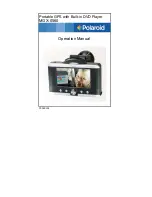
7
TW-8800 RECEIVER
Frequency Modes
The frequency at which the receiver is operating.
<< Left/Over Target>/Right>>
Indicates where the receiver is in relation to utility.
Numeric Display
Serves a dual function:
•Relative signal strength of the transmitted signal (%
shown). Responds in conjunction with the bar graph.
•Depth to the center of the target (when DEPTH pad is
pressed - IN or CM shown)
Light
Indicates the display is lit (activated by pressing LIGHT pad).
Bar Graph
Serves three purposes:
•Responds in conjunction with signal strength.
•Visual indicator for battery test (when BAT pad is pressed).
•Volume loudness indicator (when VOL(up)/VOL(down)
is pressed.
Replace Batteries
When the receiver batteries fall below a nominal level,
REPLACE BATTERIES will be displayed.
No Signal
When no signal is received by the receiver, NO SIGNAL
will display. This response may be due to the transmitter
not being turned on, or the transmitter and receiver not
be set at the same frequency.
Display
8.2 kHz
A very versatile frequency. Can be used both conductively
and inductively. Can be used on continuous utilities – wire
or pipe. The signal has a better chance of not inducing
onto nearby utilities. This frequency may work better if the
utility is grounded.
820 Hz
This frequency is mainly used on grounded wires or cables.
It can give the longest trace distance of the three active
modes.
In the passive mode, set up a defined search pattern.
The pattern should include both north/south and east/
movement. Even though a signal may be encountered,
be sure to scan the entire area.
In the active mode, setup the transmitter either induc-
tively or conductively.
Inductive
Be aware of air coupling, the transmitted signal travelling
to the receiver via the air, not the utility.
Conductive
Connect the ground plate/ground rod assembly to the trans-
mitter. Connect the red lead to the non energized utility.
Connect the black lead to the ground rod/ground plate.
Place the plate/rod at a 90-degree angle in reference to the
utility. Be sure not to place the wires over any other utility.
After the transmitter is setup, move away from the point of
connection (or Induction) about 25 feet (8 meters). Sweep
a circle around the point of connection. Initially, disregard
the LEFT/RIGHT indicator and rely on the signal strength
readout. Make note of the high readings. These are areas
that need to be traced/examined in more detail.
OPERATING INSTRUCTIONS
10
INITIAL SCAN
WARNING:
Do not handle output leads unless power is off.
ELECTRIC SHOCK HAZARD:
Servicing to be performed by
qualified personnel only.
WARNING:
Do not connect output leads to a live (ener-
gized) utility. Please prevent shock hazard and equip-
ment damage.

























